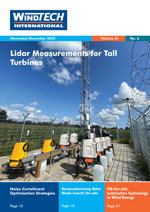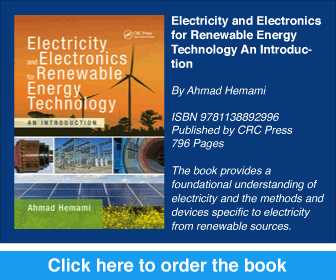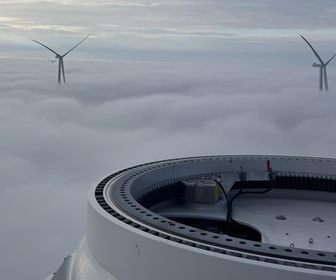- Category: Product News
Following the launch of its Aero WT series of bolt tensioning tools for wind power generation in the Spring of this year, Tentec has announced the expansion of this new range.
- Category: Product News
Siemens Energy has announced that it will test two 3.6MW wind turbines with direct drive (DD) technology at a site in west Denmark.
- Category: Product News
Beyond its assortment of off-the-shelf power resistors, Tyco Electronics also offers custom designed and manufactured resistors.
- Category: Product News
DLI introduces their Watchman DCA-50B vibration data collector, replacing the DCA-50, in their line of portable condition-based maintenance (CBM) products.
- Category: Product News
With a capability of carrying 500 A, the KILOVAC LEV200 contactor from Tyco Electronics is designed for power switching applications typically found in the switchgear, pitch & yaw drives and generators of wind turbines.
- Category: Product News
Over 8GW of new wind is currently under construction in the US for YE 2008 operation, with an?additional?35GW on track for operation by 2012.
- Amphenol introduces its new SurLok compression lugs
- Low- and medium-voltage cable assemblies for wind turbine applications
- Precision Wind's Wind Resource Management Suite
- Shrinkwrap keeps wind energy equipment in great condition
- Bachmann electronic is expanding its terminal program
- Flexilbe HVS connectors for wind power
- Tyco Electronics targets wind power applications
- Increasing the coefficient of static friction
- NRG Systems offers new sensor mounting boom
- Clipper windpower adds tall tower offering
- Second Wind offers anemometer with measnet-certified calibration
- Mistaya releases Windographer 1.2
- AWS Truewind Launches windNavigator
- Kintech Engineering synchronises using GPS technology
- Flash Technology launches new lighting system for wind market
- Thru-Way Trailers introduces BladeMaster
- New bolt tensioning tools for wind power generation
- Support for LM Glasfiber's development of new blade technology
- High-resolution wind resource map of USA completed
- Kintech Engineering has launched a new data logger
- Vindicator brings space sensor technology to the wind industry
- New sonic anemometer for reliable wind turbine control
- GL certifies first Sinovel Wind Turbine
- ZephIR laser anemometer RERL approved
- Romax Technology launches RomaxWIND
- 3TIER completes 5 km wind maps for Canada and Alaska
- Orga develops efficient white led obstacle light
- Dow introduces Airstone systems for wind energy
- A new tool for sodar-based wind assessment now commercial
- New battery technology advances wind energy generation reliability










